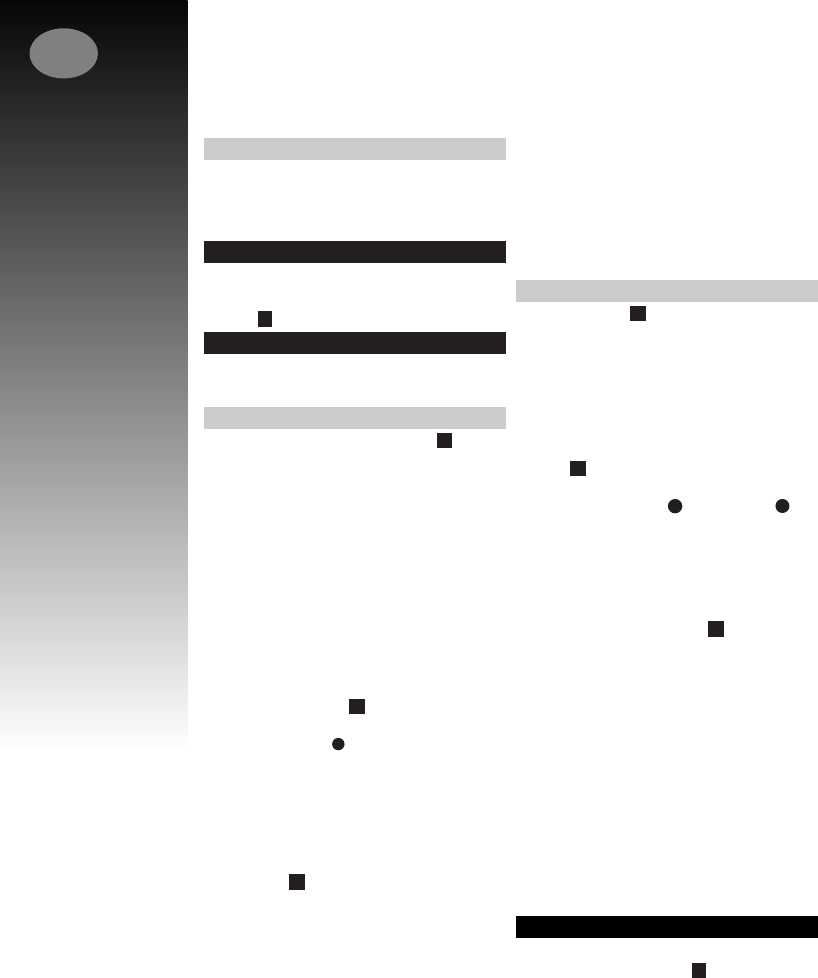
GB
Xpelair
Toilet/Bathroom
Fans DX100,
DX100PC, DX100T,
DX100H, DX100HP
DX100PIR &
DX100VTD
installation &
operating
instructions
Please leave this leaflet
with the fan for the
benefit of the user
6
3. If the shaft has cavity wall, use the wall tube
to bridge the cavity.
4. Fit ducting and condensation trap if
necessary, positioning condensation trap as
near to the fan as possible.
If installing in a ceiling
1. Check there are no buried pipes or cables
in the ceiling/joists etc.
If in doubt, seek professional advise.
2. Cut a hole 115mm diameter.
Preparing the fan for installation
Remove the front cover by pressing the release
catches located on the sides of the unit with a
3mm screwdriver, whilst pulling the front cover
forward L
Mount the fan in the hole
If working above ground floor level,
appropriate safety precautions must be
observed.
If installing in a wall, ceiling or vent
Mark the position of the back plate B
1. Hold the backplate so that the terminal block
faces you in the top left hand corner and the
lip points towards the hole.
2. Carefully insert the lip into the wall
duct/ceiling or vent shaft.
3. Adjust the position of the back plate until it is
level.
4. Mark on the wall/ceiling or vent shaft the
positions of the three fixing holes in the back
plate.
5. Remove the back plate from the ducting.
6. Drill screw holes in these positions if
necessary, and fit wall plugs if necessary.
Mount the back plate C
1. Push the ribbed gasket (RG100) onto the lip
of the back plate 1
2. If installing in a ceiling or vent, push the
larger diameter piece of the telescopic wall
tube onto the ribbed gasket. Cut the tube to
the required length first, if necessary.
3. If wiring the fan from behind, remove
knockout. Feed the mains cable through the
cable entry hole in the back plate to the
terminals D.
4. If wiring from above, leave the cable free to
be fitted into labyrinth.
5. Insert the lip of the back plate into the wall
duct/ceiling or vent shaft as before.
6. Fasten the back plate to the wall/ceiling or
vent shaft using appropriate fasteners. If
using screws, do not overtighten the
screws.
Mount the back draught shutter
1. Peel the backing from the foam strip supplied
and attach it around the outside of the lip on
the back draught shutter.
2. Go outside. Holding open the top and bottom
vanes, insert the lip into the wall duct.
3. Making sure that the back draught shutter is
level, mark the positions of the two fixing
holes in the top right hand and bottom left
hand corners.
4. Remove the back draught from the wall duct.
5. Drill screw holes in these positions, and fit
the remaining wall plugs.
6. Holding open the top and bottom vanes, refit
the back draught shutter and fasten it to the
wall using the pointed and self-tapping
screws.Do not over tighten screws.
7. Make sure that the vanes open
and shut freely.
If installing in window or panel
Sealing the hole E
1. If installing in a window or panel no more
than 9mm thick, fit the white rubber gasket
around the edge of the hole. If installing in a
panel or sealed double glazing more than
9mm thick, a DXDG double glazing kit is
required. Follow the instructions supplied with
the special kit.
Attach the back draught shutter to the
spacer F
1. Holding the top and bottom vanes, insert the
back draught shutter 2 into the spacer 3 so
that the fixing holes in the top right and
bottom left hand corners match those on the
spacer.
2. Insert two of the flat ended self-tapping
screws provided and fasten the back draught
shutter to the spacer.
Mount the fan in the window G
1. Someone else must hold the back draught
shutter and spacer in position outside, with
the spacer against the glass.
2. Make sure that the two raised fixing holes in
the spacer are horizontal and are positioned
within the hole.
3. From inside, hold the back plate so that the
terminal block faces you in the top left hand
corner and the lip points towards that hole.
4. Align the holes in the back plate with those in
the spacer.
5. Insert two of the flat ended self-tapping
screws provided in the fixing holes, and
fasten the back plate to the spacer. Do not
overtighten the screws.
Wire the electrical connections
•
Make sure the mains supply is isolated,
1. Wire the fan as shown in H check the fan
model to diagram, feeding the cable between
the two raised pegs, if wiring from above, and
through labyrinth to terminal block.
2. Switch off the mains electrical supply and
remove fuses
3. Connect the cable from the isolating switch to
the electrical supply wiring.
•
For fixed wiring circuits the protective


















